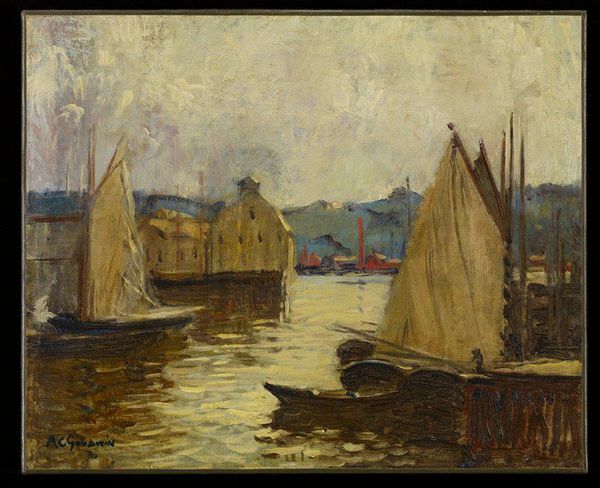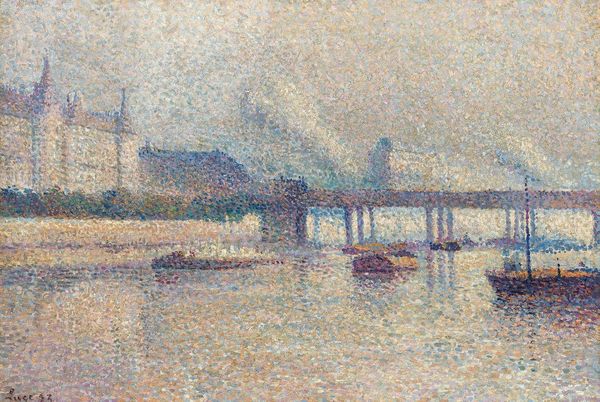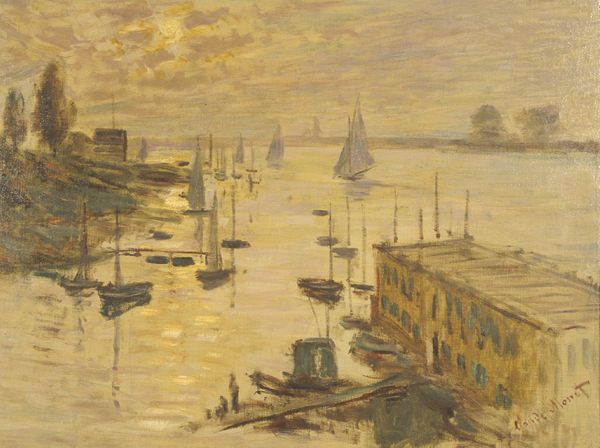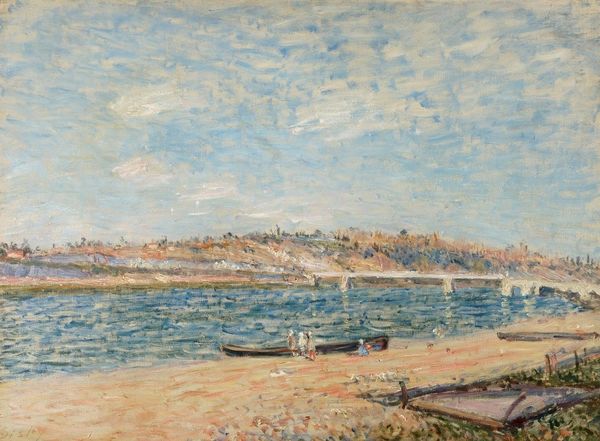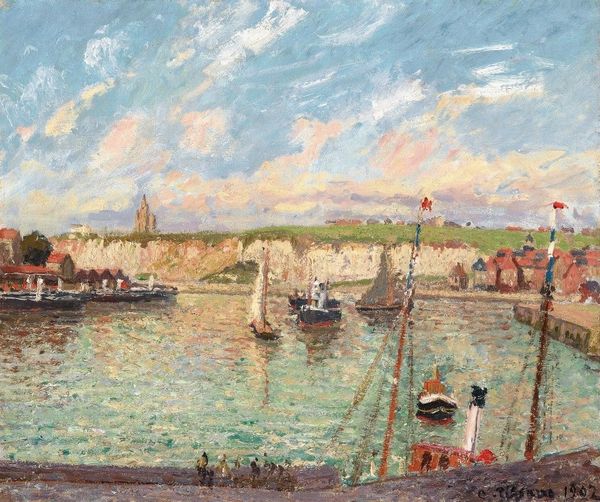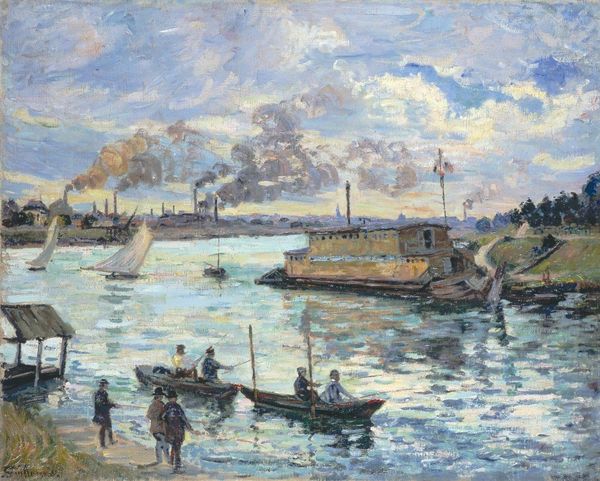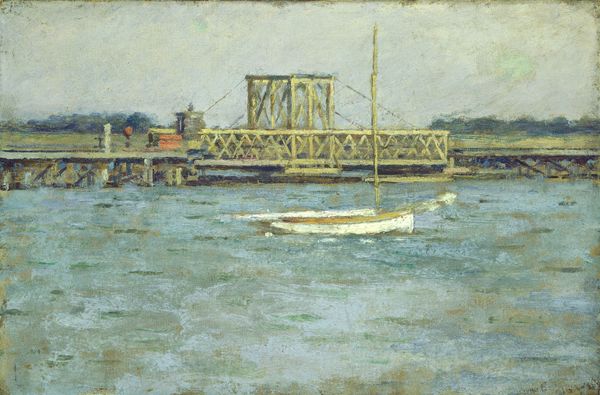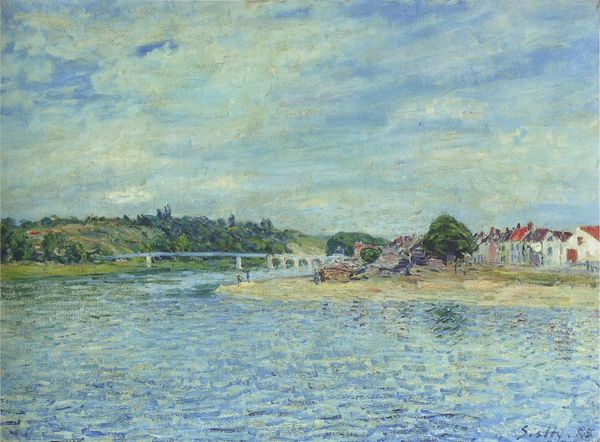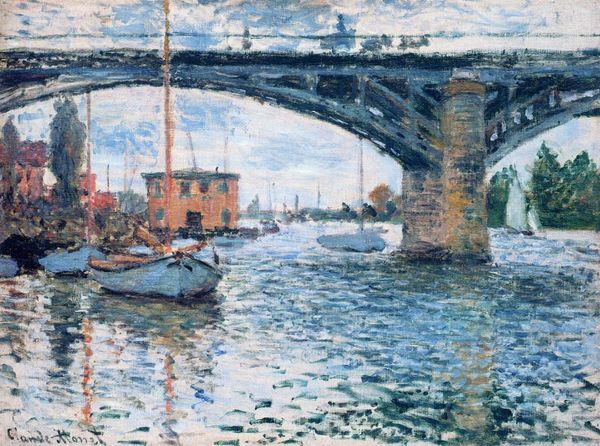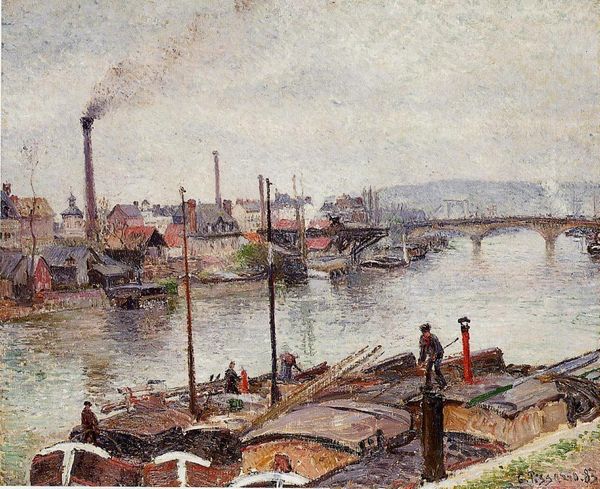
plein-air, oil-paint
#
impressionism
#
plein-air
#
oil-paint
#
landscape
#
impressionist landscape
#
oil painting
#
cityscape
#
watercolor
Dimensions: overall: 61 x 80.3 cm (24 x 31 5/8 in.) framed: 82.9 x 102.6 x 8.9 cm (32 5/8 x 40 3/8 x 3 1/2 in.)
Copyright: National Gallery of Art: CC0 1.0
Editor: So, this is Claude Monet's "Bridge at Argenteuil on a Gray Day," painted around 1876. It's an oil painting, very typical impressionist landscape. The grayness really subdues everything; it's almost melancholic, don’t you think? What do you see in it? Curator: It's more than just a mood piece; it's a document of profound social change. Monet places us right at the intersection of nature and industrialization. That bridge, a symbol of progress, also bisects the scene, cutting across the natural flow of the river. Editor: That's a good point! I was so focused on the greys, I missed the statement he was making. It really is a place where urban and natural meet, isn't it? Curator: Precisely. How does the burgeoning industry alter our understanding of the gender roles and class structures in the painting? Consider the leisure boats, suggestive of a rising bourgeoisie. Who has access to that leisurely life? And who built the bridge that facilitated it? Where are the people? Are they equally visible? Editor: I guess the absence of people directly working in this industrial landscape is really telling. It's a very silent scene. Implying labor is easy when that isn’t the case. Curator: It's the invisibility of labor, right? What do you make of the fact that it was painted ‘en plein air?’ How might the performative nature of it and Monet's identity as a man shape what and how he chose to paint? Editor: Painting outdoors brings a degree of authenticity, maybe an awareness to capture fleeting light and changing environments but by the way, do we know the status of Argenteuil during that period? Was there some political statement to make by selecting this precise suburb to paint? Curator: Indeed! It seems he highlights the paradox of "progress"—simultaneously creating and obscuring wealth. I found our conversation very enlightening and revealing; it has given me food for thought and questions on gender and representation. Editor: It gave me new perspectives on the work! I tend to focus on visuality instead of context and implications.
Comments
No comments
Be the first to comment and join the conversation on the ultimate creative platform.
